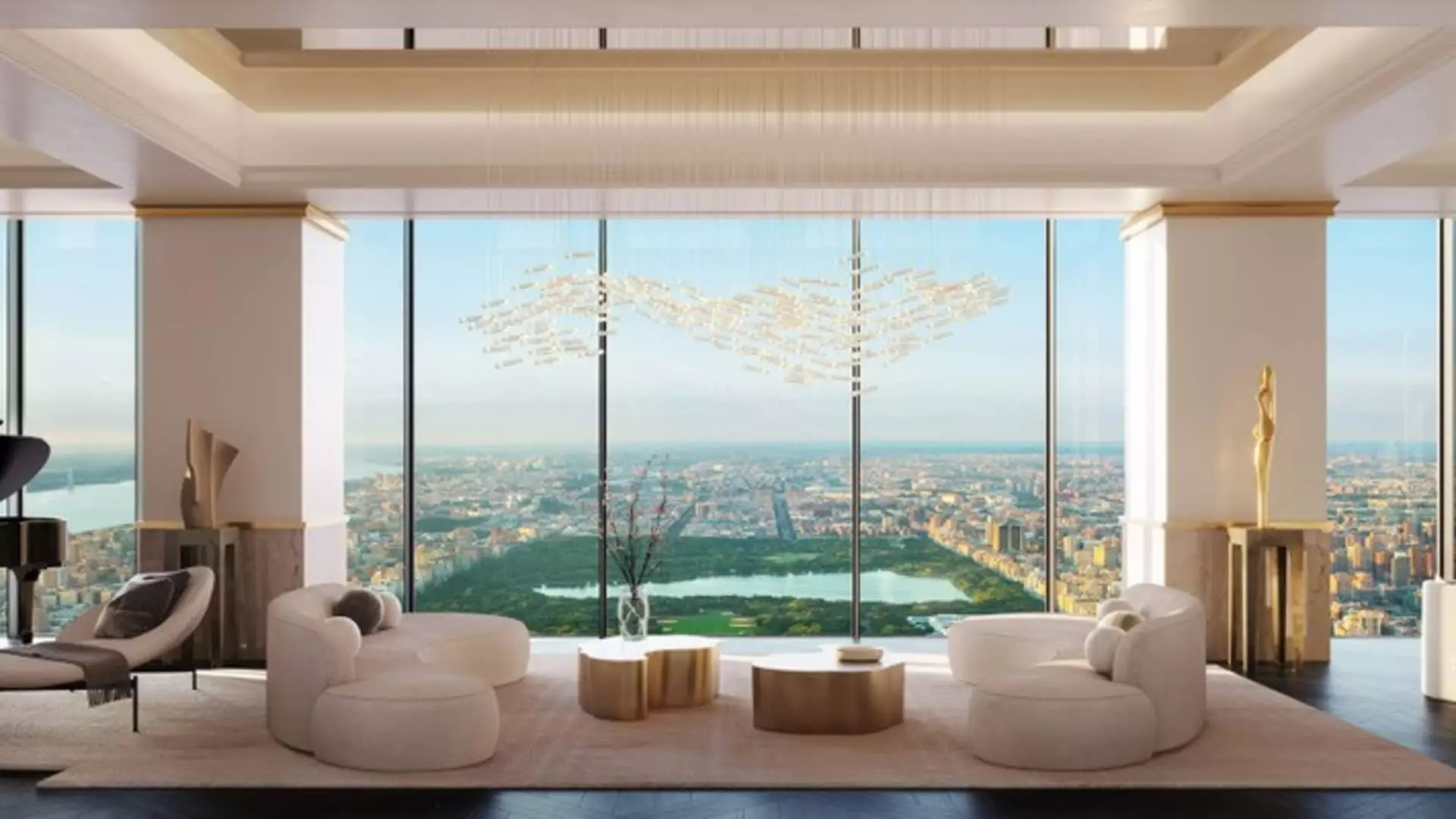As the stock market braces itself against fluctuating tariffs and contentious trade policies, New York City has thrown a wild card into the arena: the unveiling of a nearly $110 million penthouse at the iconic Steinway Tower. The timing could not be more striking, coinciding with one of Wall Street’s most tumultuous weeks, during which the Dow Jones Industrial Average saw record declines. On April 3, as anxiety gripped investors leading to a dramatic 1,679-point plunge, the luxury real estate sector seemingly shrugged off the chaos. This stark juxtaposition raises thought-provoking questions about the state of wealth, consumer behavior, and the societal fabric underpinning our economy.
It may seem absurd, even distasteful, for the ultra-wealthy to indulge in opulence when the broader economic landscape is shaking. However, these high-net-worth individuals are often insulated from the tremors of market volatility. Sotheby’s International Realty broker Nikki Field, representing the eye-popping listing, emphasized that “this buyer segment remains untouched.” This sends a clear message: wealth and privilege insulate one from the brunt of economic woes, a notion that is both fascinating and troubling.
Ultra-Prime Real Estate: A Secure Investment Amidst Turmoil?
The breathtaking quadplex, currently up for grabs, spans four levels and 11,480 square feet, flaunting five bedrooms and stunning views of Central Park. Field claims that it has generated significant interest despite concurrent market swings. For those deeply entrenched in the world of luxury real estate, this list cuts through economic instability like a knife. As Jonathan Miller, a real estate appraiser, points out, sales of homes exceeding $100 million are now a consistent trend, moving beyond being mere publicity stunts to serious transactions. In fact, last year recorded only two significant sales above the nine-figure mark, signaling that prices are not just high; they are climbing steadily.
But what does this mean for the average American? The disconnect between the rich and the average citizen is growing, a sentiment echoed by countless economists and social analysts. The wealthiest Americans hold pivotal percentages of their assets within volatile market equities. Meanwhile, a chunk—18.7%—is tied up in real estate. The implication is clear: luxury real estate has become an alternate refuge for wealth preservation, a trend that troubles many as income inequality broadens.
The Fault Lines of Luxury Consumption
Yet, while certain buyers appear to be contrary to the economic climate, the broader luxury market isn’t unscathed. Some brokers are witnessing increasing hesitance among luxury buyers, as tariffs and inflation conundrums create an atmosphere of uncertainty. Recent reports highlight that potential buyers are increasingly hesitant to engage in deals due to this very uncertainty. Miller suggests that a lack of coherent strategy surrounding tariffs could slow housing activity significantly.
While certain segments of the luxury market remain resilient, the collective hesitation among high-end buyers illustrates a palpable divide across economic classes. Many in the $5 to $10 million range are scrutinizing their purchasing decisions more meticulously, assessing value and fitting the asset to their lifestyle needs. Meanwhile, sellers find themselves engaging in quiet negotiations and discreet price adjustments; they must balance their lofty expectations with the market’s evolving reality.
Strategizing Sales: The New Game of Patience and Precision
The luxury market is now a chess game, one where turn-taking is ambitious amid uncertainty. Buyers grew savvy and strategic, opting for all-cash offers and stringent terms, while sellers seek to maintain an image of value even when negotiating soft prices. The protracted timelines for sales speak volumes too: where a sale might have typically concluded within months, now sellers are looking at a year-long process. Patience has become a new virtue.
Between the glitzy metropolitan landscapes and the undercurrents of economic concern lies an unsettling reality. Cognitive dissonance reigns in a climate where the rich thrive while others grapple with instability. It’s important to note that price adjustments are quiet, done under the radar rather than through loud public announcements. That includes homes listed at exorbitant prices before being re-evaluated in the faces of more hesitant buyers.
Focus on Value: The Dynamics of a Shifting Market
Brokers like Aaron Kirman cast a discerning eye towards the market’s split nature. Sellers still dream of the soaring prices from 2020-2021 while buyers are acutely aware of the shifting dynamics around them. The high-end luxury market is evolving, with sellers adapting their approaches to meet a new breed of discerning, often anxious buyers. The market is possibly shifting rather than declining, indicating the survival instincts of both parties at play in an unpredictable climate.
While the allure of staggering penthouse views and luxurious living persists, the undercurrents of societal and economic pressures continue to inform purchasing behavior among the wealthy. The contrasting worlds of opulence and caution tell a story about the transforming nature of value in the face of cultural shifts and economic upheaval. Whether this newfound caution leads to a more equitable market or perpetuates existing divides remains to be seen.

